After winning their first two league games of the season by two goals to nil, Lille OSC have now lost two on the bounce in Ligue 1 — first to PSG before the recent international break and then, on Friday, they fell at the feet of newly-promoted Saint-Étienne.
On top of that, Lille lost 2-1 to Slavia Praha in the second leg of their 2024/25 UEFA Champions League playoff directly before those two domestic defeats.
While Les Dogues still ultimately progressed to the UCL proper as they defeated the Czech side 3-2 on aggregate, this does technically equal three straight defeats in all competitions — a run which prompted club president Olivier Létang to describe the team’s performances as “shameful” and “unacceptable”.
After progressing to the ‘league stage’ of Europe’s elite competition, Lille will begin that campaign on Tuesday versus Sporting CP and hope to put their losing streak behind them.
Friday saw Lille endure their first goalless game of the 2024/25 Ligue 1 campaign while they’ve managed to score a grand total of just two in their last three matches in all competitions, having scored six in the three games preceding this recent run.
Their attacking struggles have been a major reason for their results of late; this tactical analysis and team-focused scout report aims to shed some light on why exactly Lille have been suffering on that front in recent fixtures and try to provide some viable solutions they can try to implement, starting with Tuesday’s Sporting clash.
Lille’s Attack In Their Last Three Vs The 2024/25 Season As A Whole
Taking a look at Lille’s shot map for the 2024/25 campaign in its whole, albeit brief, entirety compared with an isolated viz focusing just on their last three games, we can see how things have taken a turn for the worst of late.
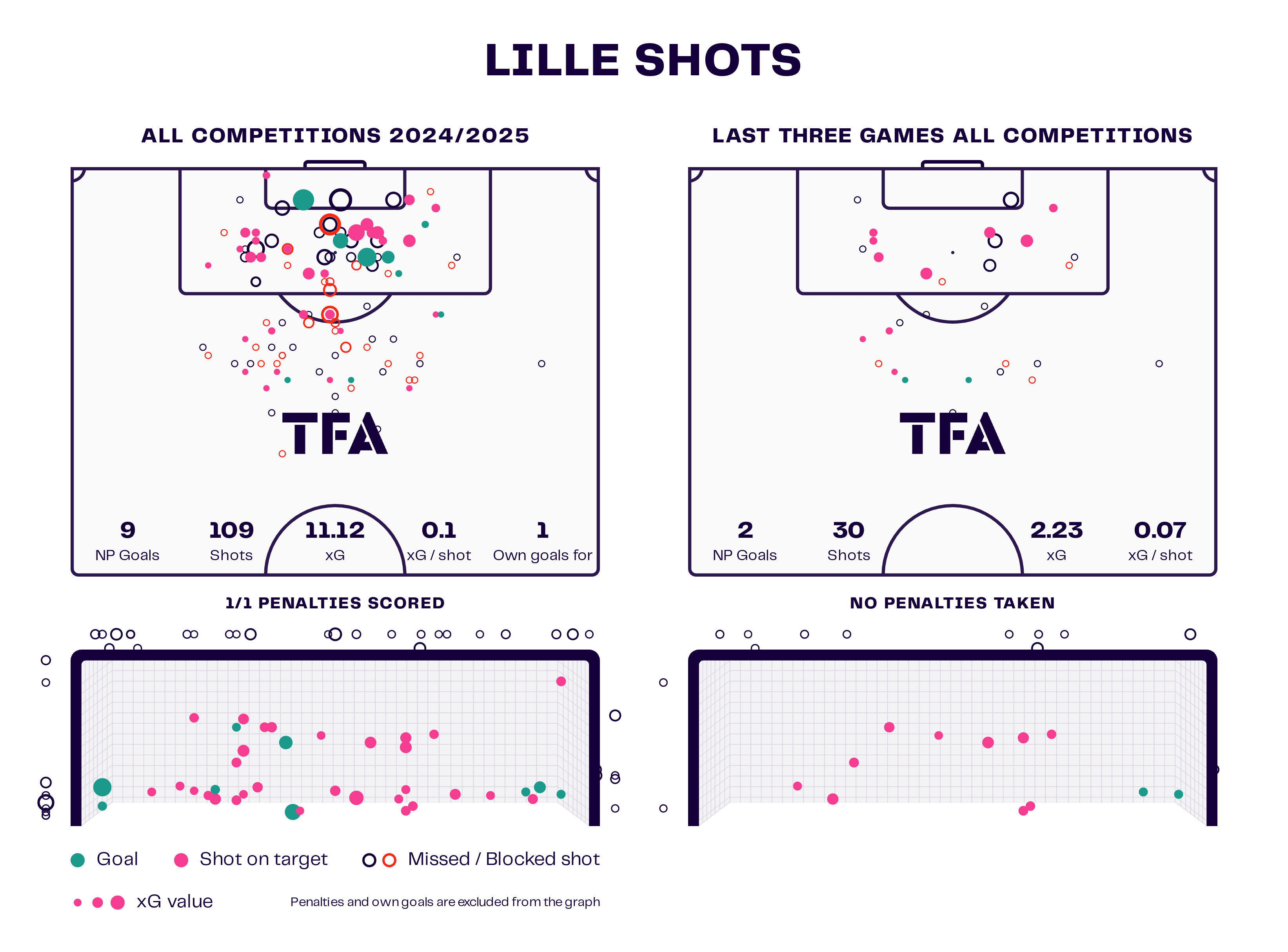
While they’ve scored nine non-penalty goals this season so far and generated 11.12 xG in the process, Lille have only managed to score two and generate 2.23 xG in their last three contests.
Alarmingly, their xG per shot has dropped dramatically in the last three games, with an average of 0.1 for their 2024/25 campaign as a whole but just 0.07 from their last three.
Looking at shot locations, opportunities have dried up immensely in high percentage positions in and around the six-yard box, the penalty spot and within the width of the goal posts inside the box.
Both of Lille’s goals in their last three games have come from well outside the area, and both were scored by Edon Zhegrova — a testament to the Kosovo international’s ball-striking ability but not something Lille will really want to see as their only two goals due to the unsustainable nature of their very recent goalscoring.
Zhegrova isn’t going to score one or two from range per game, but Lille will want to be scoring that.
So, they’ll need to find ways of creating more high-quality opportunities to boost their goalscoring numbers again.
Lille’s Patient Attacking Play & Where It’s Been Lost
At present, Lille have the third-highest average possession percentage (60.4%) and third-highest passing rate (15.4) in Ligue 1 this season — reflective of their team’s nature as a patient side with the ball that likes to craft their attacks calmly and carefully.
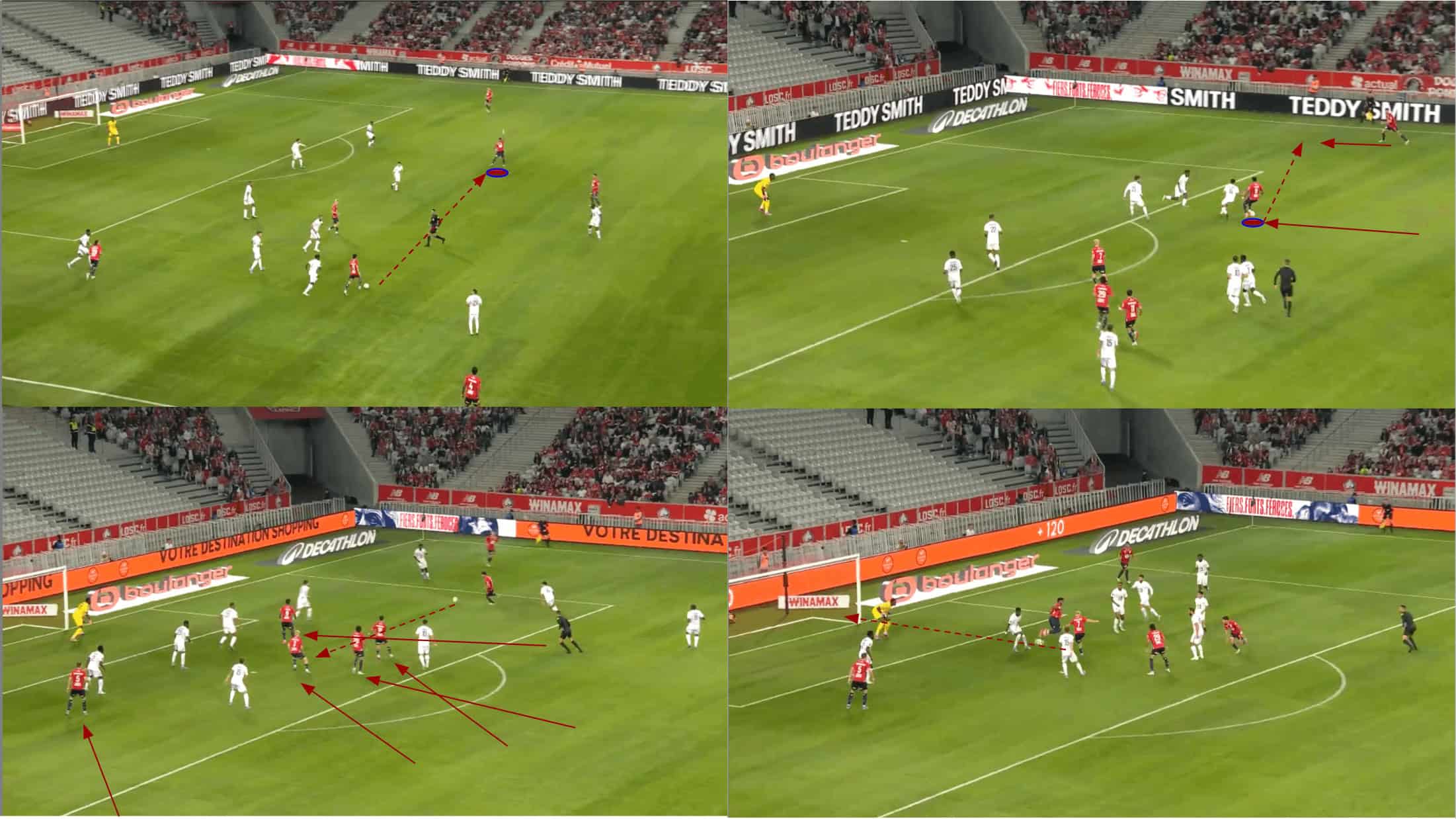
This patient approach worked wonders in the opening games of the season, with an example shown above which displays how Lille would underload the ‘9’ position at first, instead prioritising numbers further towards the edge of the final third to consolidate possession and control in this area of the pitch and get the ball into a desirable position for chance creation.
David achieves this as he receives in space in a ‘10’-like position before playing the overlapping right-back through.
As play moves on, now we see that with the ball in a valuable playmaking position, Lille packed numbers into the box all at once to overwhelm the opponent’s backline.
This leads to a decent chance for Haraldsson.
Prior to their last three games, Lille had only gone behind once in all of their five games up to that point in the season — the second leg of their UCL third qualifying round clash with Fenerbahçe — a game they were still technically drawing on aggregate.
They hadn’t conceded a league goal this term until they met PSG.
Now, they’ve gone behind in each of their last three, and this puts their patient attacking approach under the microscope in a new light.
We can see how their players respond when pressure mounts and the need for urgency arises.
The fact they’ve gone behind in each of their last three has hurt their attacking performances in those games and seen them slightly desert their tactics through their behaviour and natural desire to find a goal as quickly as possible.
Bruno Génésio has not set the team up for quickfire, high-tempo attacking, but as players start to feel pressure and give in to the desire to increase the pace of play as they search for a goal, it creates a disparity between the tactics and the players’ actions, leading to a breakdown of attacks.
Against Slavia Praha, Lille resorted to a lot of long shots and ended up generating their lowest xG tally of the season so far — 0.32 — a reflection of their desperation in that fixture.
Mohamed Bayo came into the team for their last two league games.
While he’s a player known for his offensive positioning and ability to give his team a good option to aim for inside the penalty area, he, too, gave in to the sense of urgency.
He started making movements you wouldn’t normally see him make, leading to poor positioning and ultimately denying him goalscoring chances simply as a result of his own movement and the fact this made it more difficult for his teammates to find him.
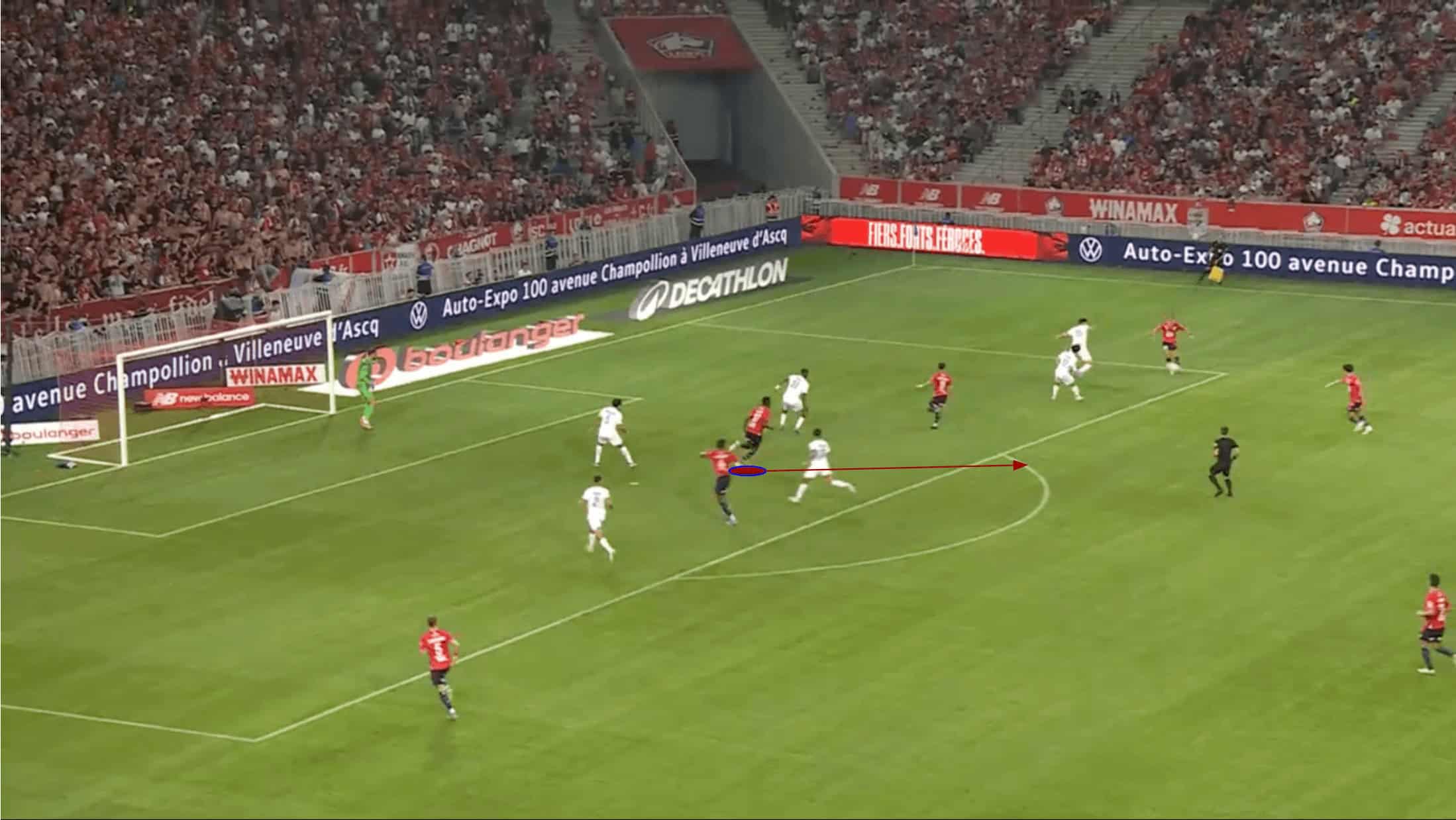
Here, in the second half against PSG, Bayo abandons his usual principles of focusing primarily on positioning himself in high-value areas and letting the team find him to go chasing the ball in a sense and trying too hard to get involved.
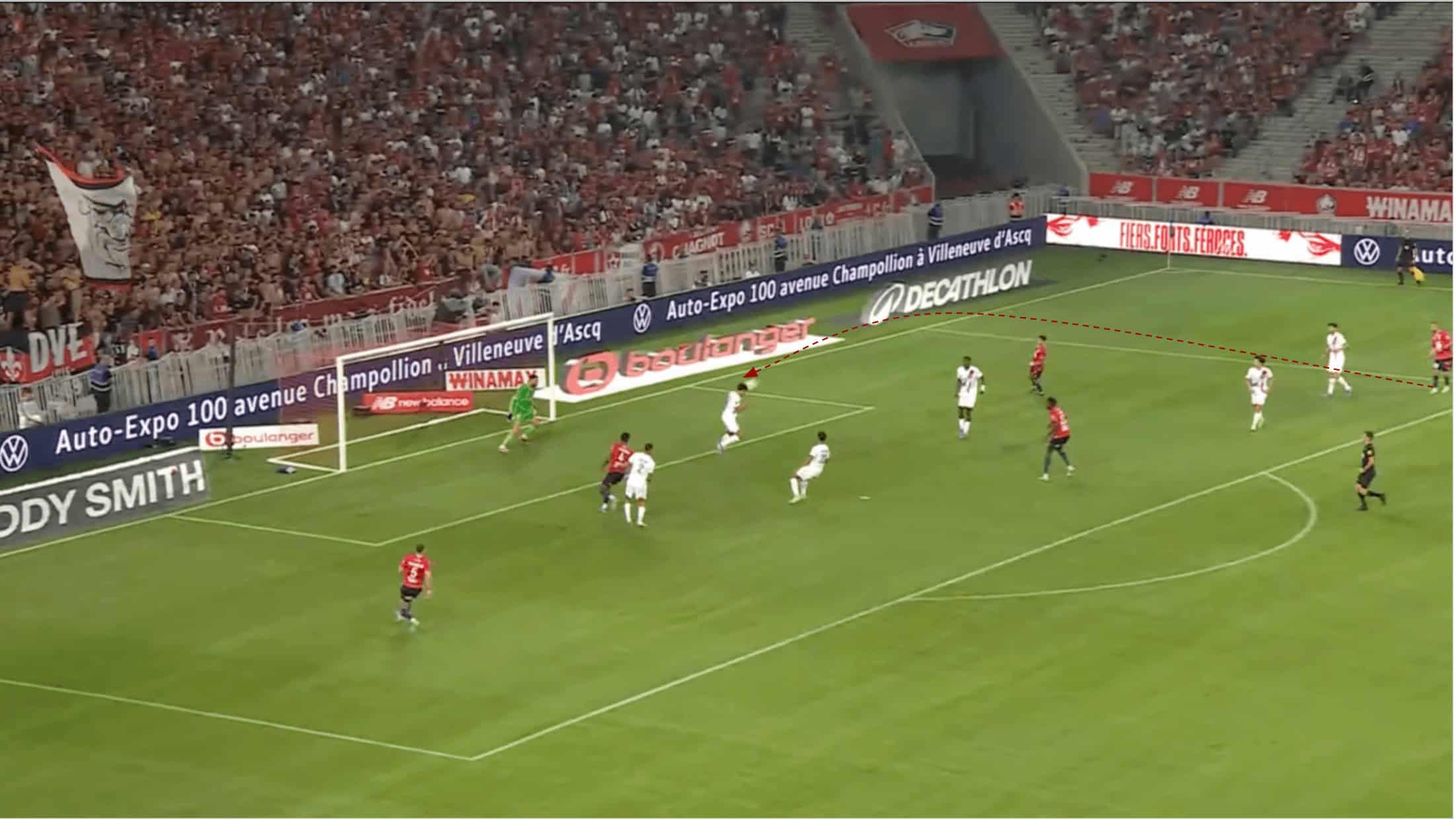
As a result of Bayo’s movement away from a high-value position, he misses the opportunity to meet the ball that’s played in by the playmaker on the wing, giving the PSG defender an easy clearance rather than a challenge.
Lille’s Need For More Link-Up In Attack
Earlier on in the season, an area in which Lille had been performing very well was with regard to their link-up play in attack — be that via Zhegrova-David, David-Haraldsson or any other combination of attackers/midfielders.
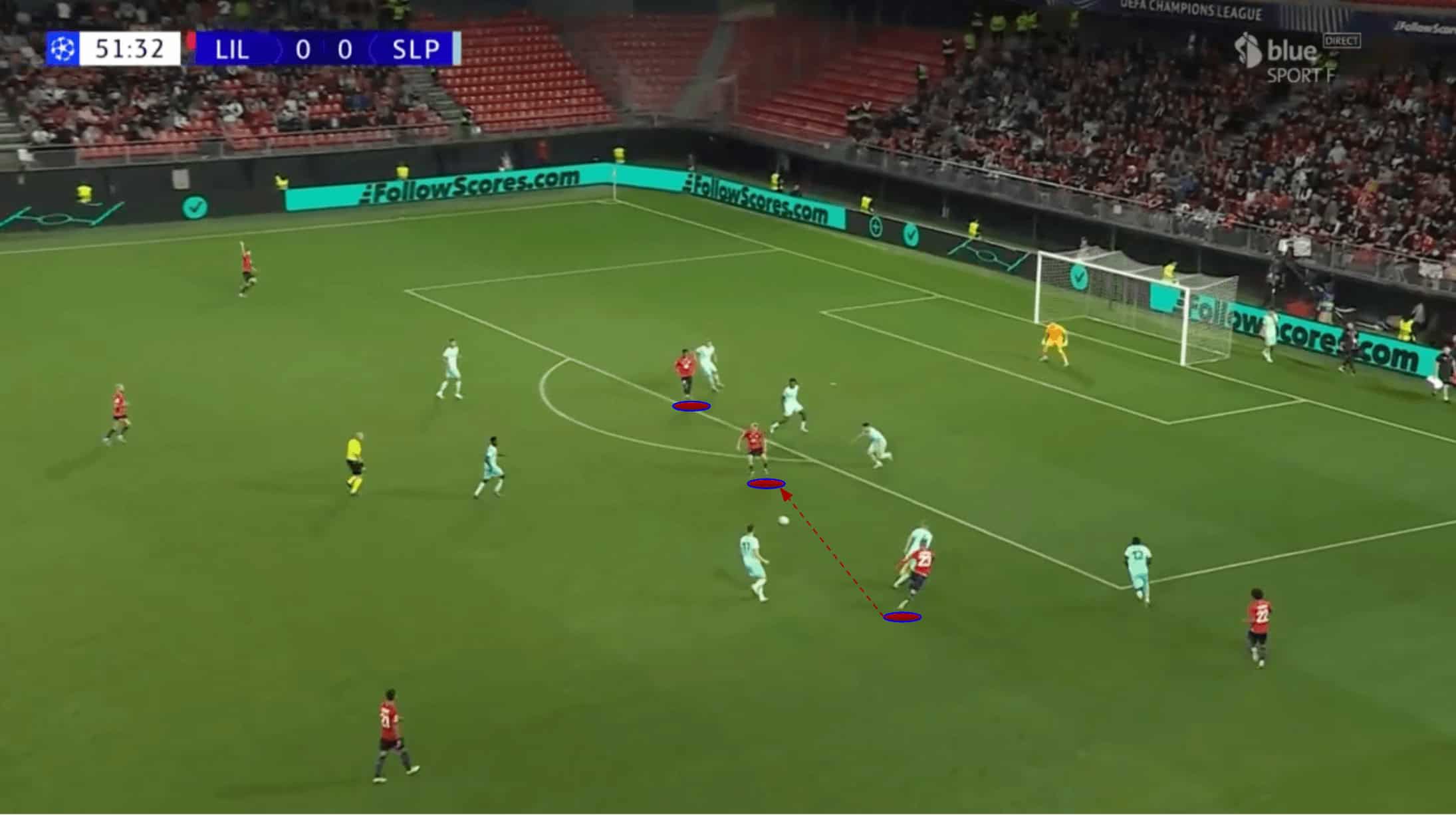
Here in figure 5, we see Zhegrova finding Haraldsson on the edge of the area in some space with David behind him, getting ready to make a run for the receiver.
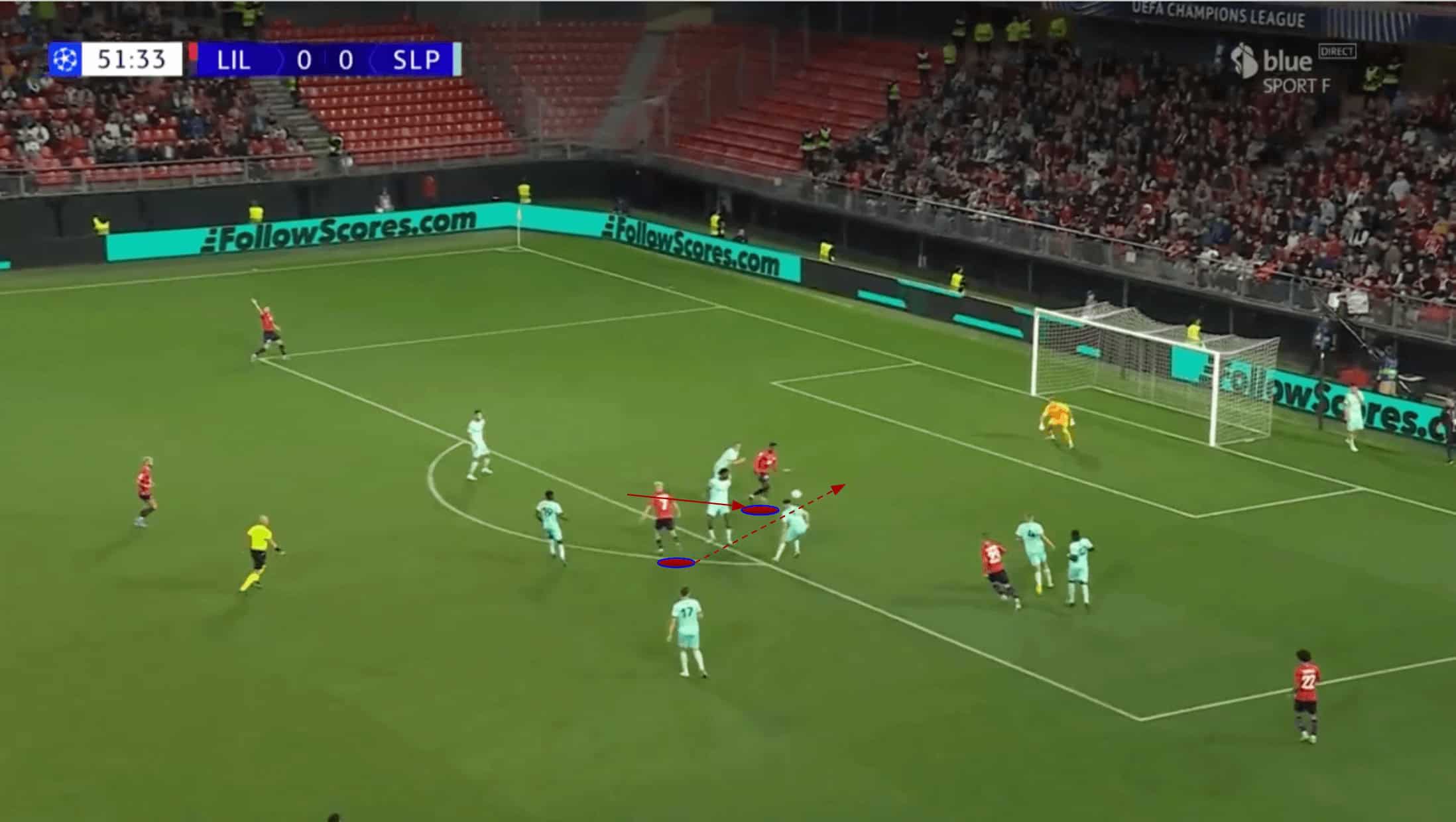
Haraldsson had just enough time and space to turn, spot David’s run and play the Canada international through on goal, where he would go on to slot the ball beyond the Slavia stopper, Antonín Kinský, to put Les Dogues up 1-0.
With their patient manner of building attacks, Lille need technically solid players within relatively close proximity of one another to pull off intricate little passages of play like the one we see above, which carve the opponent open smoothly — it’s an artistic approach to football in some sense.
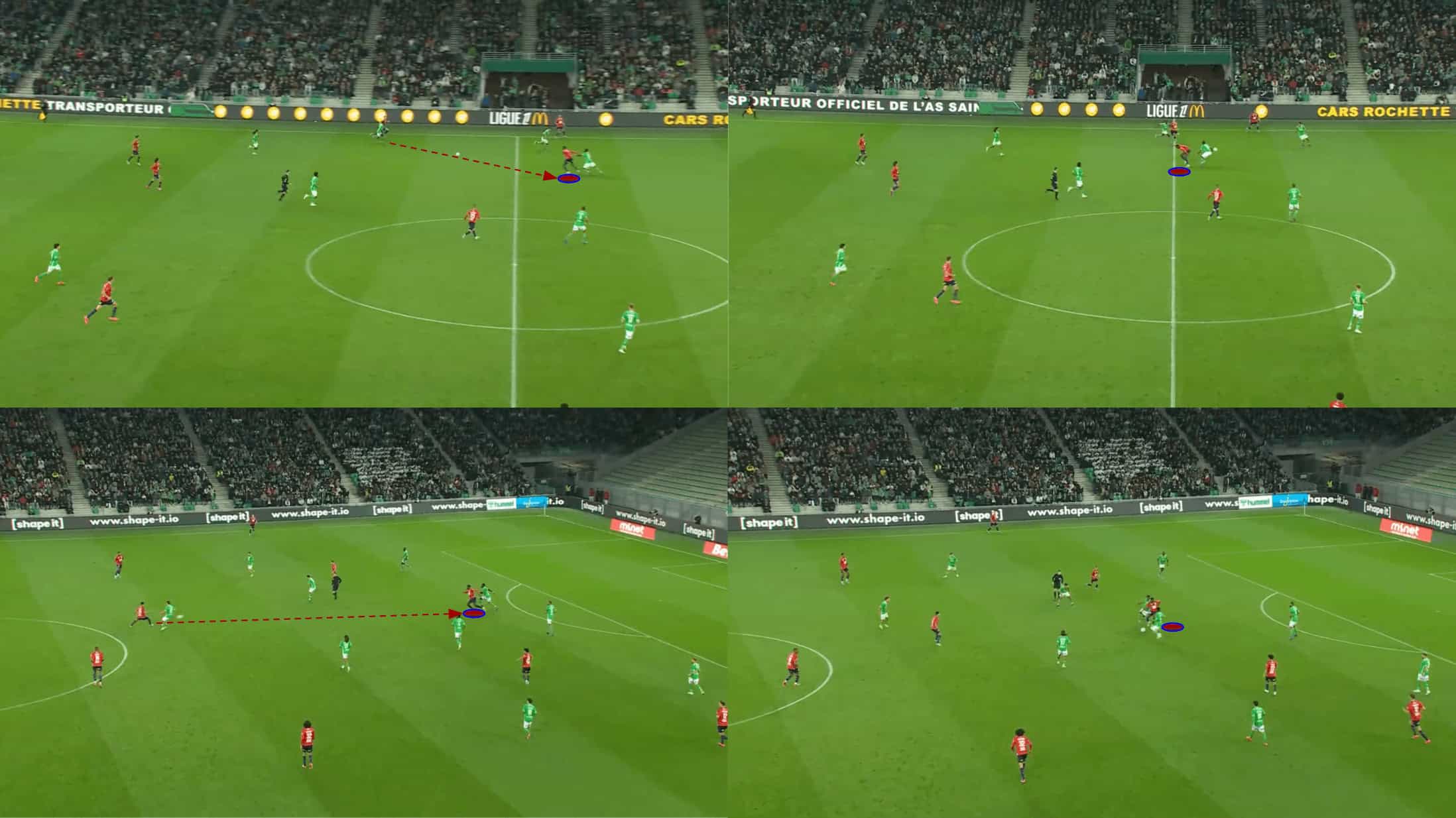
With Bayo starting Lille’s last two games as a lone striker, some of Lille’s ability to pull off these intricate passages of play has been lost.
Take the couple of examples from Lille’s loss to Saint-Étienne above for example.
In the top two images, we see Lille sending the ball into Bayo’s feet, but a poor touch sends the ball away and into Saint-Étienne’s possession once again.
In the bottom two images, another poor touch in combination with Bayo’s lack of agility and overall below-standard ability with his back to goal led to a turnover of possession and this Lille attack breaking down inside the final third.
Lille have had few issues reaching the final third in recent games; when they do, they fail to convert final third entries into decent goalscoring opportunities.
This isn’t to bash Bayo so much as it’s to say they aren’t using him to the best of his ability.
Bayo is not a player you want with his back to goal as it doesn’t utilise the Guinean forward to his strengths.
Again, Bayo is great at positioning himself well and helping his team generate good goalscoring opportunities via his off-the-ball movement.
By being a solid option for the playmakers to look for, he doesn’t need to get involved in the chance creation so much.
Playing Bayo closely alongside another forward, such as David, could be a potentially interesting solution for Génésio to try as he attempts to find the right balance in his forward line.
In theory, David as a second-striker would allow him to use his ability to drift off into pockets of space, get on the ball, help his team establish themselves in the final third, and either score or create.
This would relieve Bayo of the hold-up responsibility he clearly doesn’t enjoy and allow him to focus on picking up the best positions so he’s ready to strike when the team finds him.
Conclusion
To conclude this tactical analysis piece, it’s clear that Lille’s attack has taken a dip in recent games, which can be attributed to a couple of key factors — the team’s tactics faltering as players succumb to game state-induced pressure and players not being used in their best roles.
At this point, with Lille generating less than 1.0 xG in each of their last three games — the only three games out of eight this season where that has been the case — Les Dogues need to experiment as the current setup isn’t maximising their talents; we’ve suggested some solutions above which we feel would be interesting for Lille to consider.

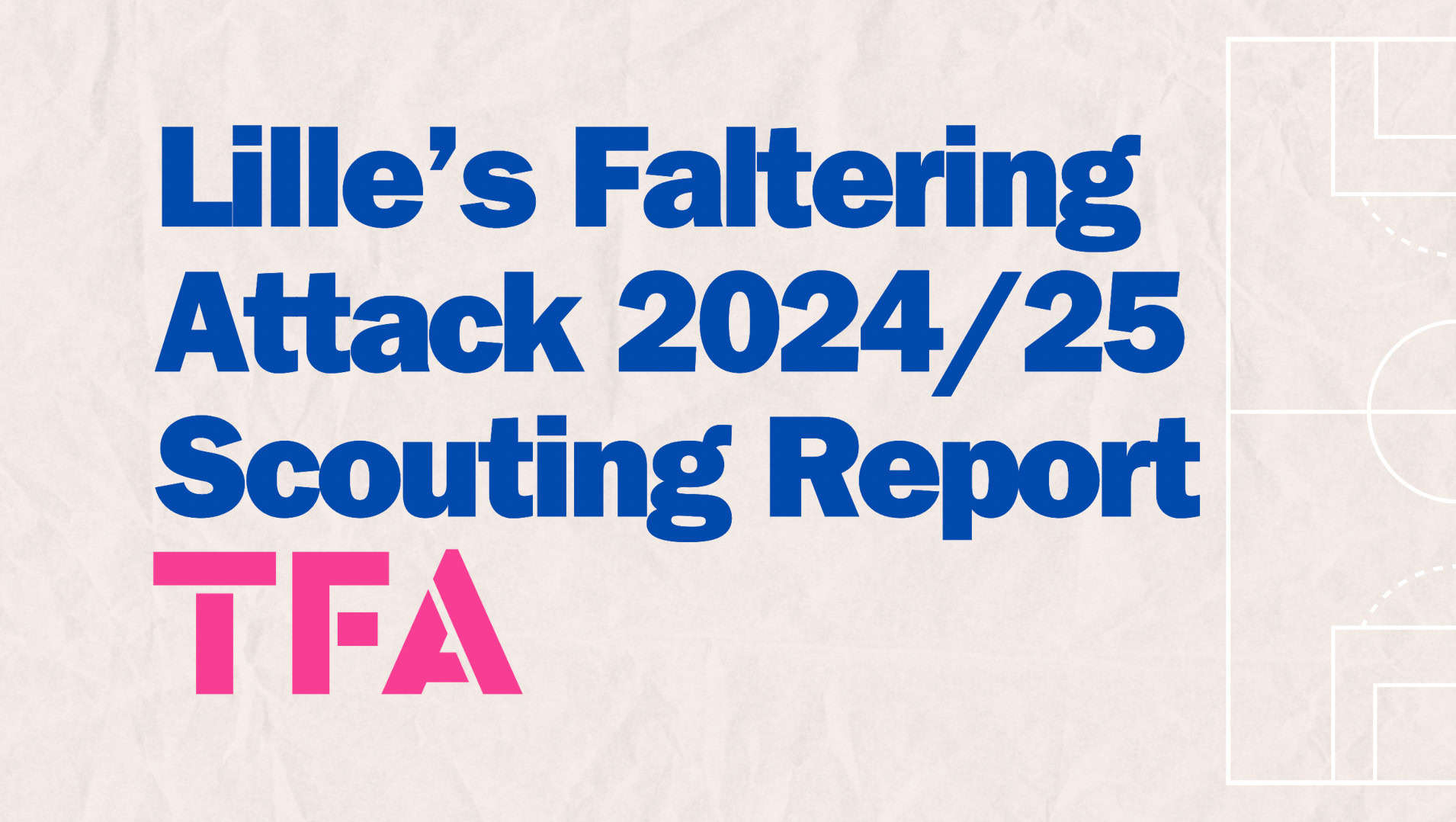



Comments